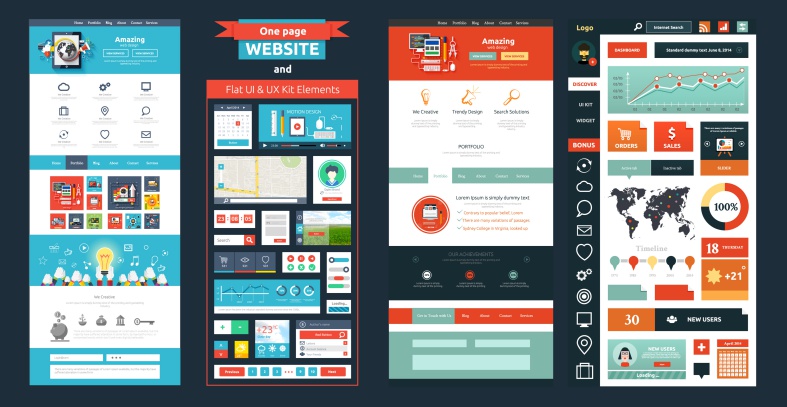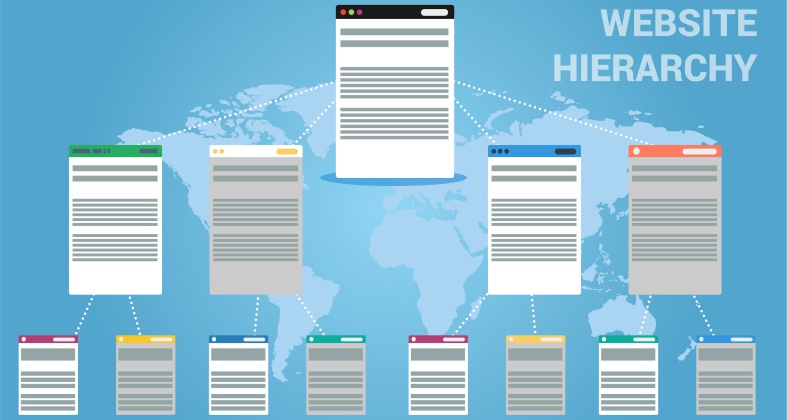While multi-page websites are the bread and butter of website design and marketing departments and send visitors where they want to go through itemised headings, single-page websites are becoming increasingly popular due to the changing world of SEO. Search engine optimisation has undergone frequent changes, each one eliciting a new trend for those ‘in the know’. New SEO techniques are exasperating users through misuse and abuse of profitable website owners, forcing search engines to develop new methods of ranking. This blog looks into single- and multi-page websites in current and future search engine optimisation environments.
Getting To The Core of UX
Turning the corner and opting for a more concise webpage instead of a full-blown website initiates an important step in the field of digital design; by concentrating the information you pass on to your potential customer, you make the user experience (UX) simpler and quicker. This move starts a process of elimination where only the most interesting and attractive data is chosen. While multi-page websites often give a business the impression that more is best, this is rarely the case. Users only tend to visit pages of a website that directly apply to them and, unless the site is meant to encourage browsing, this means a lot of unnecessary text and pages are added ‘just because’.
Speed And Simplicity
Loading times can be a complete turn-off to website visitors. In multi-page editions, as well as on large, single-page sites, loading speed should be barely perceptible. Again, this means a good look at website content and applications. Multimedia with animations and videos may load quickly on a business computer, but if part of your audience is low income or in countries or districts with slow network speeds, their addition becomes a negative factor.
Site Heirarchy
For any website, a list of priorities should be composed containing the core information you want to offer to your visitor. These headings should then be placed in a flow chart showing how each visitor gets to the information they are seeking. Obviously, the fewer steps a visitor must take to obtain that information, the better. In many cases, businesses use a mix of multi- and single-page websites, using the larger of the two as a source for hyperlinks inserted into the single-page version. A great idea, but more costly than a single site. Whether this will increase rankings in newer SEO algorithms is also doubtful.
Once priorities have been arranged, the meaning of hierarchy must now be looked at from an entertainment perspective in order to optimise ranking with newer algorithms. Without slowing loading speeds for any desired customer type, how does one stop the visitor from looking elsewhere? While businesses selling one or two patented products must rely more on quality and ease of payment and delivery, others might require a more visual approach using specially designed applications to give the user a unique experience.
Discipline And Tough Decisions
Removing content often feels like a drastic measure. When longevity counts towards search-engine rankings, choosing to take away something positive is a tough decision to make. For long-running sites such a decision may have negative consequences. That said, fine-tuning word counts and separating the chaff from the grain should be part of any web designer’s long-term strategy. Even with multi-page websites, attention to detail concerning the selection of only the most important data pays dividends. Today’s user has neither the time nor the patience to read long texts unless the information contained is new, interesting and true. This will apply long into the future. For the single-page entity, this step is a natural one. For larger sites, the step should become natural.
Blogs And News And Products, Oh My!
A lot of additional content is used solely for the long climb up the ranking ladder or various search-engines. Type in a generic question and your engine will come up with countless snippets that seem to match each other word-for-word. This repetitive offering of similar information can be extremely damaging to a company’s reputation. Techniques used to overtake other blogs or news items include adding synonyms no native speaker would ever select (unless that native speaker happens to be James Joyce), repeating keywords in such a way as the sentence construction becomes irritating, or inserting links to studies that in no way relate to the topic, as it is perceived that the majority of readers won’t bother to look at the source.
News items, similarly, are shared by your competition. While the popular words used in news items will bring rankings up with current algorithms, it is still worth pondering over whether this item reflects on your company and your products. The future of SEO is your own personal branding, where the popularity of your product and not its initial advertising counts. Even now, adding overly generic items to your website content is a double-edged sword. These may make your website more visible, but they add yet another route to your data flow, making navigation through your site a little more complicated each time.
For large catalogues of products a single-page website will not suffice. Yet even in this situation, giving necessary information and information unique to your company counts. It is the word ‘unique’ that counts, but not to the wording of your content. Most Internet shoppers will browse multiple sites for a single product. They will know the dimensions of a product have read its reviews, have an idea of its price. By linking to a recognised and popular review site, by offering a unique image of the product alongside the image used by the majority of its suppliers which show its dimensions, and by immediately showing your price and your promotions on a single, quick highly visual block, the visitor and potential customer is attracted by your uniqueness.
The Future Of SEO
Single-page websites dilute SEO. Fewer headings and more sub-headings take away the power of the keyword. The simple solution is to use more H1 headings on single-page sites; however, this entire situation may not be as serious as it seems. Many businesses use basic SEO but concentrate on their social media profiles to bring brand recognition. An obvious domain name, a trusted product and an interesting UX is bringing us back to the 90s when SEO competition was unheard of. And the brightest lights in digital marketing are hinting at the following becoming more relevant to SEO rankings than keywords in the future:
1. The faster your site, the higher your rank;
2. Algorithms will predict what it is the user wants to know and bring them immediately to the right source, without their needing to click on multiple SERP links (pogo-effect);
3. New technology will be able to source the user query from an entire site, even within a video, negating the need for excessive keyword titles;
4. Image and voice searches will be as relevant as typed queries, if not more so. It is important to consider these methods when designing current websites, but will become ever more important;
5. Return to traditional, organic search results: audiences are becoming frustrated with the excess of fake news and copied or unreliable information that pops up on search engine results;
6. Outbound links will have less relevance;
7. UX will become more relevant.
All of these point to a more precise website that tells the customer what he or she wants to know, without pulling a search-engine optimised rabbit out of a hat. And for a precise, concentrated source of information which saves user time, the correctly designed single-page website wins.
The Death Of SEO
SEO will not die, but it will metamorphosise into something unrecognisable from the algorithms we have learnt to attract, reward and deceive today. The continued frustrations of users with search engine results is forcing the development of new artificial intelligence which goes further than keyword and popularity checks and will instead reward website design for uniqueness, speed and branding.


 1300 353 700
1300 353 700 info@magiknewmedia.com.au
info@magiknewmedia.com.au



















